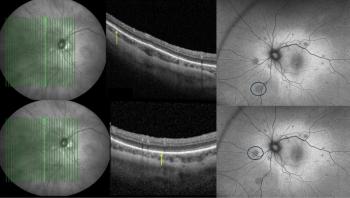
Lowering levels of arginase may halt progression of diabetic retinopathy
High levels of the enzyme arginase contributes to vascular eye damage, and therapies to lower its levels could halt progression of diabetic retinopathy (DR), according to researchers at the Medical College of Georgia (MCG) School of Medicine, USA.
High levels of the enzyme arginase contributes to vascular eye damage, and therapies to lower its levels could halt progression of diabetic retinopathy (DR), according to researchers at the Medical College of Georgia (MCG) School of Medicine, USA.
This is the first connection made between eye disease and arginase, an enzyme also known to cause cardiovascular disease, according to researchers. To create an animal model of the inflammation that occurs early in vascular eye disease, researchers used bacterial proteins to produce uveitis, which also can cause blindness but is easier to detect and treat than DR.
"It's taking L-arginine away from the nitric oxide synthase so it can accelerate wound healing, but the lack of substrate for nitric oxide synthase leads to vascular constriction and occlusion which causes further tissue damage," said Ruth Caldwell, PhD, a cell biologist at the MCG School of Medicine and VA Medical Center, and the study's corresponding author.
As with arginase, some reactive oxygen species formation is a good thing but too much causes blood vessel damage, said researchers.
"Our studies demonstrate that if we inhibit arginase, we also reduce the reactive oxygen species level and vice versa," said Wenbo Zhang, PhD, postdoctoral fellow in Dr. Caldwell's lab and the paper's first author. "It appears that arginase and nitric oxide synthase influence each other in a positive feedback loop."
Rather than drugs that generally suppress arginase, the researchers want to find new drugs that can restore healthy levels of arginase.
Newsletter
Get the essential updates shaping the future of pharma manufacturing and compliance—subscribe today to Pharmaceutical Technology and never miss a breakthrough.













































